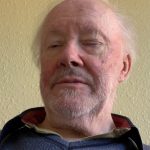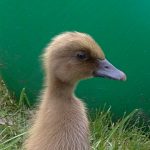Samsung / Worldheat buffer mixing
Hello,
New to this forum - thanks to all the great discussions and advice I've been reading through.
My setup, installed in May this year: Samsung Gen6 14kW, Worldheat integrated cylinder/buffer (250l / 50l).
After noticing that rads didn't feel particularly warm compared to the flow temperature out of the heat pump, I've instrumented various points and been measuring temperatures.
The graph below shows pump out and return, as well as heating circuit out and return.
Once it reached steady state, averages are
* output of the heat pump is 41.5C (measured close to outdoor unit)
* return to the heat pump is 37C (measured close to outdoor unit)
* flow to rads is 35.5C (measured at output of buffer)
* return from rads is 29.5C (measured at pipe into buffer)
Flow rate from the heat pump primary was 32l/m. No sensor on rad circuit flow rate, but pump is set to maximum.
There is a pipe run between outdoor unit, and possible sensor calibration differences, so I think flow to rads is essentially the same as return to heat pump.
This all means that I have an average rad temp of 9 degrees below the heat pump output vs an ideal of 2.5-3C (and what all the system design calc assume). I'll need to run at low efficiency as it gets colder to get the output I need from the rads.
Info I read online discusses pros and cons of buffers, it seems like my problem is mixing in the buffer, but mine seems extreme as if there is no stratification in the buffer at all and it is completely mixing inside. I'm wondering whether something is set up wrong, or whether the Worldheat buffer had badly designed internals, or is simply too small. I'm wondering whether I should be considering getting it reconfigured as a 2 port series volumiser setup.
Other info: weather compensation is set up.
Advice gratefully received!
thanks,
Nick.
Definitely a problem there as the return temperature to the heat pump is 7 degrees higher than when leaving your radiator return! I think there is a lot of mixing going on in the integrated cylinder buffer area. Someone with more knowledge of buffer plumbing will be along to clarify I think. Regards, Toodles.
Toodles, heats his home with cold draughts and cooks food with magnets.
Posted by: @nickhorneThis all means that I have an average rad temp of 9 degrees below the heat pump output vs an ideal of 2.5-3C (and what all the system design calc assume). I'll need to run at low efficiency as it gets colder to get the output I need from the rads.
This seems like a classic case of somebody who didn't know what they were doing installing a buffer with complete mixing, which is almost certainly why they installed a buffer in the first place.
Posted by: @nickhorneI'm wondering whether I should be considering getting it reconfigured as a 2 port series volumiser setup.
Yes. Unless there is a good reason for hydronic separation (eg you have a hybrid system with a boiler as well as the heat pump) you system will almost certainly be about 20- 25% more efficient with a 2 port volumiser in the return instead of a 4 port buffer. The auxillary pump will also need to go.
4kW peak of solar PV since 2011; EV and a 1930s house which has been partially renovated to improve its efficiency. 7kW Vaillant heat pump.
Hi @nickhorne For your, and others benifit, I will reproduce part of some training I have written, It explauns quite clearly what is happening within your susyem.
Buffer tanks, System separation and Volumizers.
Buffer tanks/low loss heders or any form of system seperation
Buffer tanks and Low loss headers separate the heat supply equipment from the heat distribution equipment. They allow for different flow rates on either side. Buffer tanks will also increase the water volume within the heating system.
Volumizers
Volumizers increase the volume of the heating system without allowing different flow rates within the system and prevent the distortion of flow temperatures.
A heat pump requires a certain volume of water to operate correctly, preventing rapid cycling of the compressor and to assist with the defrost procedure. The common train of thought is to install a buffer tank or system separation to overcome these issues. There is a perception that a buffer tank will add thermal storage and buffering to an installation, this can be true but at a 5 Deg Delta T between the flow and return temperature, a buffer tank containing 100 litres if water, will only hold 0.6 kw of heat in storage, insignificant in reality. Unfortunately, as buffer tanks and system separation encourage varying flow rates within a tank causing distortion if not properly controlled, this is the mixing of hot and cold water, cools the water down which can impact on the performance of the system, increasing the running costs and affecting comfort levels for the end user.
The most common reason, engineers give to include a buffer tank in the system, is they cannot get sufficient flow rate through the distribution system to satisfy the high flow rate requirements of the heat pump. Unfortunately, there is an implication to reducing flow rate. When you slow the water flow rate down, the difference between the flow and return temperatures increases, when this increase occurs, the mean temperature reduces, as radiator output is determined by the mean flow temperature, this results in a reduction in radiator output. There are 2 ways to deal with this problem, increase the radiator size, increasing the installation cost, or increase the flow temperature significantly increasing the running costs.
Example 1
Reducing the flow rate will require an increase in radiator size due to the reduction in mean flow temperature (42.5 Deg C to 37.5 Deg C) In reality, to achieve an equivalent output, the radiator size will need to be increased from a 600 X 1100 K2 radiator to a 600 X 1600 K2 radiator.
Example 2
Increase in flow rate to maintain the same output of the radiator. The flow rate would have to be increased by 6 Deg C. The 6 Deg C increase in flow temperature will result in an increase in running costs by approximately 80% as indicated by the graph below.
Increase in flow temperature with heat pumps, has a significant effect on the running cost of the system, for every degree, you move of source (outside temperature on an air source) you add between 2.5 and 3% to your electricity bill. The graph below clearly shows the implications of raising flow temperatures at the temperatures we operate at.
As you can see, moving the flow temperature from 45 Deg C to 52 Deg C will increase the funning costs by about 80%, hence why it is critical to reduce the flow temperature of the system as much as possible and avoid equipment that may increase the temperature with no benefit, like buffer tanks or any form of system separation.
My advice would be, to remove the buffer or change it to a volumizer on the flow, remove as much control in the system as possible (thermostats and TRV's), only control your bedrooms and confirm your flow rate, with every thermostat/TRV on the system closed, of between 15 and 20 Liters per minute. This without a modulating pump, will give you the best possible overall perfomance.
That is a nice set of diagrams thanks for posting.
Why volumiser on the flow not the return? I thought the usual advice was the latter to avoid any flow temp degradation through the volumiser and reduce the heat loss from it (because on the return it is operating at a lower temperature)? Perhaps you could clarify.
4kW peak of solar PV since 2011; EV and a 1930s house which has been partially renovated to improve its efficiency. 7kW Vaillant heat pump.
@jamespa Just to start, I want to say, I have never installed a buffer, low loss header, or volumize on any system and I have installed nearly 1000 heat pumps, ground, and air, from 1.5kw to 500 kw, in addition, I have never re-piped a system no matter how bad it was (I have improved systems).
Where I have advised people, and they insist on installing a volumizer for insurance purposes, I advise it to be on the flow. It tends to stop the radiant heat crash on defrost, in defrost the flow temperature drops dramatically below the return temperature, this low-temperature water going directly into the radiators, significantly reduces the temperature, reducing the radiant emission (infrared) which gives the impression or feel of the room temperature suddenly dropping, this is much worse when using fan coils. If the volumisor is on the flow, this cold water from the heat pump is blended within the tank and the effect are reduced maintaining comfort levels. There is no added advantage if it is installed on the return, it only increases the open-flowing system volume, the return temperature, back to the heat pump are identical in both positions.
If you are going to install equipment, you must make the best use of it.
Posted by: @heacolWhere I have advised people, and they insist on installing a volumizer for insurance purposes, I advise it to be on the flow. It tends to stop the radiant heat crash on defrost, in defrost the flow temperature drops dramatically below the return temperature, this low-temperature water going directly into the radiators, significantly reduces the temperature, reducing the radiant emission (infrared) which gives the impression or feel of the room temperature suddenly dropping, this is much worse when using fan coils
That's an interesting angle not previously mentioned anywhere I have seen. Is it perhaps a positive reason for a volumiser?
4kW peak of solar PV since 2011; EV and a 1930s house which has been partially renovated to improve its efficiency. 7kW Vaillant heat pump.
@jamespa You are correct. Not much of what I say, is mentioned elseware. I follow facts and evidence, not the herd 😊
If the system was entirely fancoils, I probably would install a volunisor on the flow. Never done that, so never installed one. Expensive piece of equipment, for little or no benifit.
Thanks for all the really helpful detailed information everyone. I'm still surprised to be getting complete mixing and losing as much as 6-7 degrees, even though everything installed as per manufacturers instructions.
When I go back to my installer as ask about reconfiguring as a 2 port series volumiser, a couple of questions:
- it is an integrated buffer/DHW tank, but looks like all buffer connections are on the outside, so do you think this will be possible? ( https://midsummerwholesale.co.uk/buy/world-heat-cylinders/250-pre-plumbed-mim-01)
- am I likely to get a response that samsung ashp warranty only valid when configured with a buffer?
thanks,
Nick.
Posted by: @jamespaPosted by: @nickhorneThis all means that I have an average rad temp of 9 degrees below the heat pump output vs an ideal of 2.5-3C (and what all the system design calc assume). I'll need to run at low efficiency as it gets colder to get the output I need from the rads.
This seems like a classic case of somebody who didn't know what they were doing installing a buffer with complete mixing, which is almost certainly why they installed a buffer in the first place.
Posted by: @nickhorneI'm wondering whether I should be considering getting it reconfigured as a 2 port series volumiser setup.
Yes. Unless there is a good reason for hydronic separation (eg you have a hybrid system with a boiler as well as the heat pump) you system will almost certainly be about 20- 25% more efficient with a 2 port volumiser in the return instead of a 4 port buffer. The auxillary pump will also need to go.
It's not a hybrid system, but is dual zone (most of the house with conventional rads, kitchen with UFH).
Oh Crikey! I was hoping I had persuaded my reluctant contractor to change my tank to a volumiser in the return line, as advised by one of the contributors here and now I will have to ask him to to put it in the flow line. My credibility will be shot
342sq m "Upside down" house in Algarve. Portugal
Mitsubishi PUHZ-120YUK 16kW ASHP
12 Solar Panels Growatt Inverter
2 x Growatt 7.5kW Batteries
Fronius EV Charger
Kia e- Niro 64kW
@davidalgarve 🤣 🤣 🤣 Save the confusion and just take it out. In this case, amputation is best.
- 26 Forums
- 2,338 Topics
- 52.8 K Posts
- 160 Online
- 5,994 Members
Join Us!
Podcast Picks
Latest Posts
-
RE: What a Bad Heat Pump Installation Looks Like
I am curious about what was MCS' role in this process? ...
By Batpred , 5 hours ago
-
RE: Aira Heat Pump: Stylish Scandinavian Heating
Has anyone tried using the Smart Tariff Control on the ...
By ChandyKris , 9 hours ago
-
RE: Grant Aerona Short Cycling
@toodles Billy the big bahco spanner lovingly applied (...
By Grantmethestrength , 11 hours ago
-
RE: Experience with Mitsu Par 50/60 Wireless Controller
The 27°C request doesn't boost the weather compensation...
By Sheriff Fatman , 13 hours ago
-
RE: Getting the best out of a heat pump - is Homely a possible answer?
Oh and it was installed by Stevie Wonder!
By Grantmethestrength , 15 hours ago
-
There seems to be plenty of evidence to support this. ...
By JamesPa , 21 hours ago
-
RE: One Year Review: Grant 13kW ASHP - A Catalogue of Errors
@solenoid it sounds like you are making progress. No n...
By JamesPa , 22 hours ago
-

RE: LiFePO4 lithium battery fires and explosions
@iaack — thanks, a useful video. They do make it clear...
By cathodeRay , 23 hours ago
-
RE: How good is the app support for your heat pump?
I think you are right about the ebus stick. It's cert...
By JamesPa , 1 day ago
-

RE: My DIY Heat Pump installation
@majordennisbloodnok Element-ary my Dear Major.
By Toodles , 2 days ago
-
RE: Replacing my 18 month old Hitachi Yutaki ASHP
Yes, you can work out a lot from a plot of FT. Interes...
By JamesPa , 2 days ago
-

Welcome to the forums @isaac. What you’re describing is...
By Mars , 2 days ago
-

Win an Eve Smart Home Bundle worth over £350!
Win an Eve Smart Home Bundle worth over £350! ...
By Mars , 2 days ago
-
RE: Is your heat pump insured?
I chose Tesco in the end. Unambiguously cover HP, PV an...
By Davesoa , 2 days ago
-
RE: Help me keep the faith with my air source heat pump installation
@adamk You can get an idea of if your flow and return...
By SimonF , 2 days ago
-
This Solis inverter being rated 8kw and (I expect, as I...
By Batpred , 2 days ago
-
RE: A2A vs A2W: Which Heat Pump Would You Pick?
I have one fancoil in an otherwise all radiator system....
By JamesPa , 2 days ago
-

RE: Electricity price predictions
That's understandable...but I was referring to our 'oth...
By Transparent , 2 days ago











